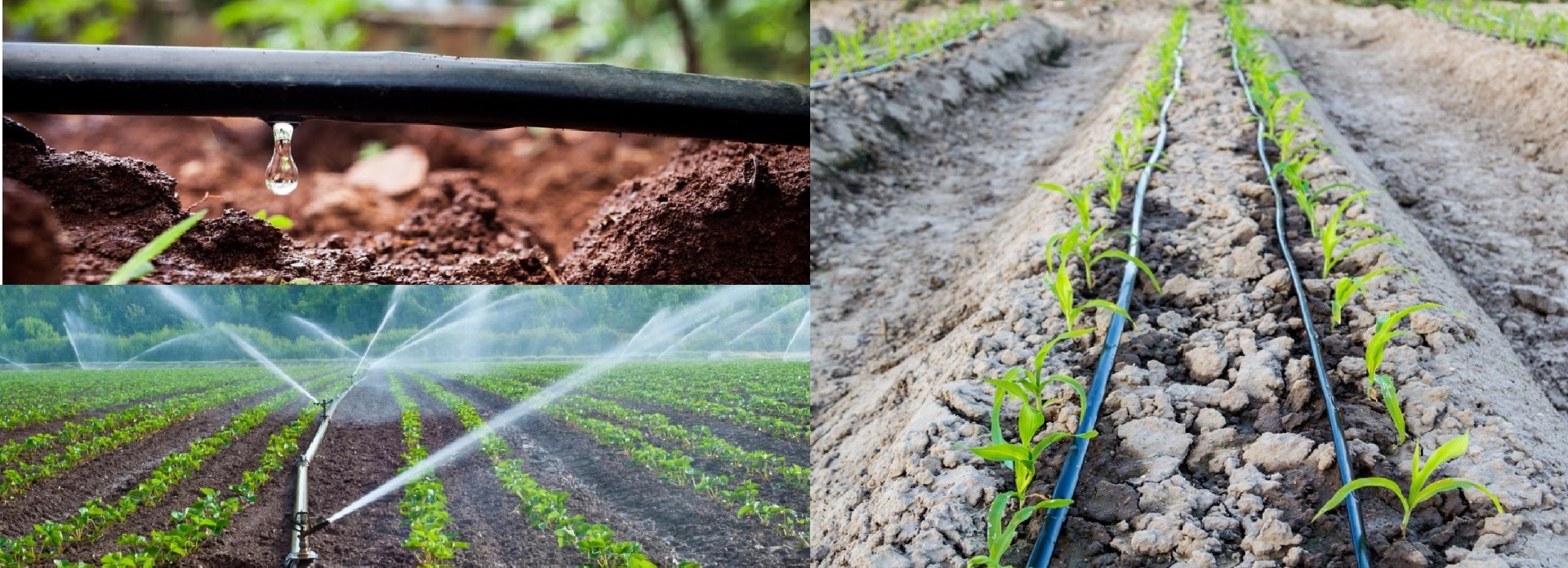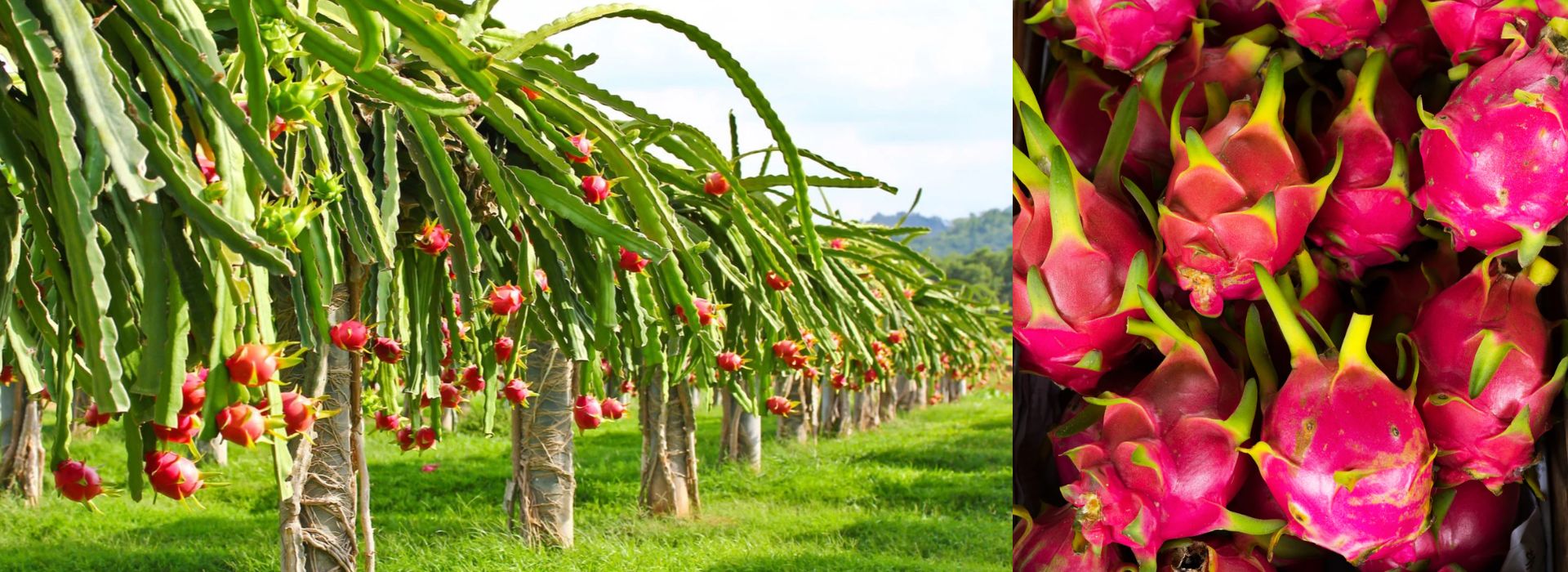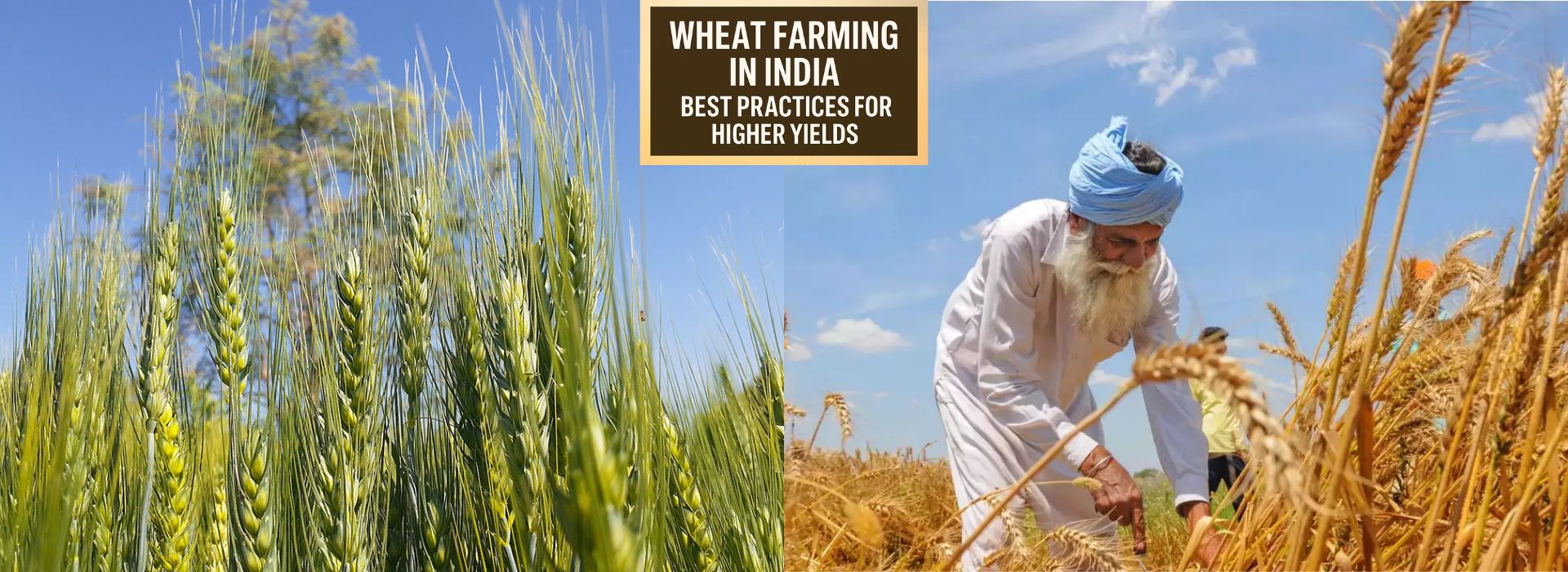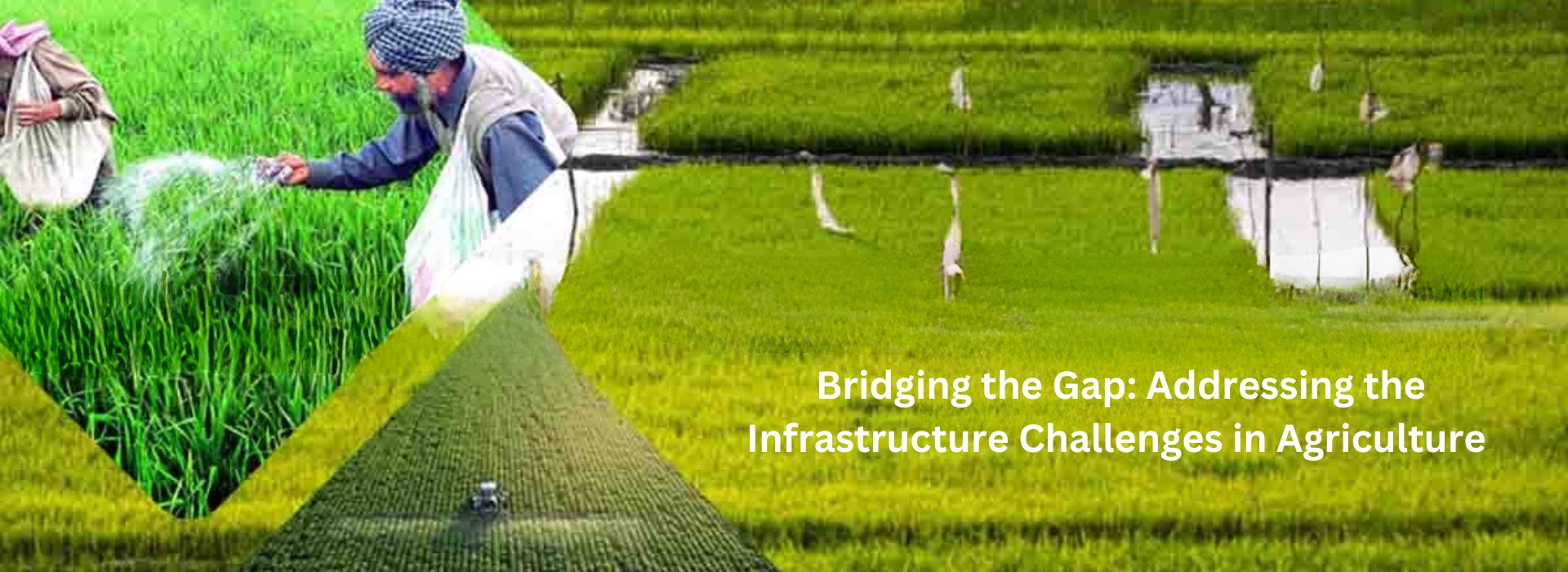Maximizing Efficiency: The Benefits of Drip Irrigation for Your Farming and Gardening
August 22, 2024Maximizing Efficiency: The Benefits of Drip
Irrigation for Your Farming and Gardening
Are you looking for a more efficient way to water your plants and
increase your farm's productivity? Look no further than drip irrigation. Drip irrigation is an innovative and highly effective method that delivers water
directly to the roots of plants, reducing water waste and maximizing
efficiency.
With drip irrigation, water is targeted where it is needed the
most, ensuring that plants receive the right amount of water without any excess
runoff. This not only conserves water but also prevents nutrient leaching, weed
growth, and soil erosion.
Whether you are a farmer or a gardening enthusiast, the benefits
of drip irrigation are undeniable. It allows you to maintain precise control
over the amount of water your plants receive, leading to healthier and more
robust crops. Additionally, the slow and steady water delivery system promotes
deep root growth, making plants more resilient to drought conditions.
In this article, we will explore the numerous advantages of drip
irrigation and how it can revolutionize your farming or gardening practices.
Get ready to optimize your water usage, increase crop yields, and save time and
money with this game-changing irrigation technique.
How does drip irrigation work?
Drip irrigation is a highly efficient method of delivering water
directly to the roots of plants. Unlike traditional sprinkler systems, which
can waste a significant amount of water due to evaporation and runoff, drip
irrigation uses a network of tubes, emitters, and valves to slowly and
precisely apply water to the soil around each plant.
The system works by using a water source, such as a well, tank, or
municipal supply, to feed a network of small-diameter tubing or pipes. These
tubes are perforated with tiny holes or have specialized emitters installed at
regular intervals. As the water flows through the system, it slowly drips out
of the emitters and is absorbed directly into the soil, ensuring that the water
reaches the plant's roots where it is needed most.
One of the key advantages of drip irrigation is that it allows for
precise control over the amount of water delivered to each plant. By adjusting
the flow rate and the spacing of the emitters, growers can tailor the
irrigation to the specific needs of their crops, taking into account factors
like soil type, plant size, and environmental conditions. This targeted
approach helps to minimize water waste and ensure that every drop is utilized
effectively.
Advantages of drip irrigation
Drip irrigation offers a multitude of benefits that make it an
attractive option for both farmers and gardeners. Here are some of the key
advantages of this irrigation method:
Water conservation: Drip irrigation is renowned for its
water-saving capabilities. By delivering water directly to the root zone, it
reduces water waste through evaporation, runoff, and deep percolation. This can
result in water savings of up to 50% compared to traditional irrigation
methods, making it an eco-friendly and cost-effective choice.
Increased crop yield: With its precise water delivery and
efficient use of resources, drip irrigation can significantly boost crop
yields. By ensuring that plants receive the optimal amount of water and
nutrients, it promotes healthy growth, stronger root systems, and
higher-quality produce. This can translate into higher profits for farmers and
more abundant harvests for gardeners.
Improved weed control: Drip irrigation systems apply water
directly to the plant's root zone, minimizing the amount of moisture available
to weeds. This helps to suppress weed growth, reducing the need for manual or
chemical weed control and saving time and resources.
Nutrient management: Drip irrigation allows for the precise
application of fertilizers and other soil amendments, ensuring that plants
receive the necessary nutrients in the right amounts. This targeted approach
helps to prevent nutrient leaching and maximize the efficiency of your
fertilizer investments.
Reduced labor: Compared to traditional irrigation methods, drip
systems require less manual labor for tasks like moving sprinklers, adjusting
hoses, and monitoring water flow. This frees up time for other important
farming or gardening activities, improving overall productivity and efficiency.
Versatility: Drip irrigation systems can be designed to
accommodate a wide range of crop types, field sizes, and terrain. They can be
easily adapted to fit the unique needs of your farm or garden, making them a
flexible and scalable solution for various growing operations.
Water conservation with drip irrigation
One of the most significant advantages of drip irrigation is its
ability to conserve water. By delivering water directly to the root zone of
plants, drip irrigation minimizes the amount of water lost through evaporation,
runoff, and deep percolation.
In traditional irrigation methods, such as sprinklers or flood
irrigation, a significant portion of the water applied never reaches the
plant's roots. Instead, it is lost to the atmosphere or seeps deep into the
soil, beyond the reach of the plant's roots. This not only wastes water but can
also lead to the leaching of valuable nutrients, further reducing the
efficiency of the irrigation system.
Drip irrigation, on the other hand, applies water slowly and
precisely, ensuring that it is absorbed directly into the soil and utilized by
the plants. This targeted approach can result in water savings of up to 50%
compared to other irrigation methods. In arid or water-scarce regions, this
water conservation can be a game-changer, allowing growers to maximize their
water resources and maintain healthy, productive crops.
Furthermore, drip irrigation systems can be fine-tuned to the
specific needs of each plant or crop, adjusting the flow rate and emitter
spacing to match the unique water requirements. This level of control helps to
eliminate over-watering or under-watering, ensuring that every drop of water is
used effectively.
By implementing drip irrigation, farmers and gardeners can not
only conserve precious water resources but also reduce their environmental
impact and operational costs. As water scarcity becomes an increasingly
pressing issue worldwide, the water-saving benefits of drip irrigation make it
an increasingly attractive and sustainable choice for modern agricultural and
horticultural practices.
Increased crop yield with drip irrigation
One of the most significant benefits of adopting a drip irrigation
system is the potential for increased crop yields. By delivering water and
nutrients directly to the root zone of plants, drip irrigation can
significantly enhance the growth and productivity of a wide range of crops.
The precise and targeted nature of drip irrigation allows plants
to receive the exact amount of water they need, when they need it. This
eliminates the risk of over-watering or under-watering, which can both have
detrimental effects on plant health and yield. With the optimal amount of water
and nutrients available, plants are able to thrive and reach their full
potential.
Moreover, the slow and steady delivery of water through drip
irrigation promotes deeper root growth, which in turn makes plants more
resilient and better able to withstand drought conditions or other
environmental stresses. Deeper roots also allow plants to access a larger
volume of soil, tapping into a greater pool of available nutrients and
moisture.
This improved resource utilization translates directly into higher
crop yields. Studies have consistently shown that drip irrigation can increase
yields by 20-50% compared to traditional irrigation methods, depending on the
crop and growing conditions. For high-value crops, this can result in
significant increases in revenue and profitability for farmers.
Additionally, the precise control over water and nutrient
application offered by drip irrigation can lead to improvements in crop
quality. By ensuring that plants receive the exact resources they need, growers
can produce fruits, vegetables, and other crops with enhanced flavor, size, and
appearance, making them more appealing to consumers and potentially commanding
higher market prices.
Overall, the yield-boosting benefits of drip irrigation make it a
highly attractive option for both large-scale commercial farms and
smaller-scale gardeners. By optimizing the use of water and other resources,
drip irrigation can help growers maximize their productivity and profitability
while contributing to a more sustainable and efficient agricultural system.
Weed control and nutrient management with drip
irrigation
Drip irrigation not only conserves water and increases crop yields
but also offers significant advantages in terms of weed control and nutrient
management. These benefits can further enhance the overall efficiency and
productivity of your farming or gardening operations.
Weed control: One of the key advantages of drip irrigation is its
ability to suppress weed growth. By delivering water directly to the root zone
of your desired plants, drip irrigation minimizes the amount of moisture
available to weeds. This targeted approach starves the weeds of the water they
need to thrive, effectively reducing their growth and competition with your
crops.
Additionally, the slow and steady application of water through
drip irrigation can create a dry soil surface, further discouraging weed
germination and growth. This helps to minimize the need for manual or chemical
weed control, saving time, labor, and resources. With fewer weeds to compete
with, your plants can devote more energy to their own growth and development,
leading to higher yields and better-quality produce.
Nutrient management: Drip irrigation also provides significant
advantages when it comes to nutrient management. By delivering water and
nutrients directly to the root zone, drip systems can ensure that your plants
receive the exact amounts of fertilizers, minerals, and other soil amendments
they require.
This precise application of nutrients helps to prevent leaching,
which can occur with traditional irrigation methods. Leaching not only wastes
valuable resources but can also contribute to environmental pollution by
allowing excess nutrients to enter waterways or groundwater. With drip
irrigation, the risk of nutrient loss is significantly reduced, allowing you to
maximize the efficiency of your fertilizer investments.
Furthermore, the ability to integrate fertigation (the
simultaneous application of water and fertilizers) into a drip irrigation
system allows for even greater control over nutrient delivery. By injecting
soluble fertilizers directly into the irrigation water, you can ensure that
your plants receive a constant, balanced supply of essential nutrients
throughout the growing season.
This targeted approach to nutrient management can lead to
healthier, more vigorous plants, as well as improved crop quality and yield. By
optimizing the use of water and nutrients, drip irrigation can help you achieve
more sustainable and productive farming or gardening practices.
Designing a drip irrigation system for your
farm or garden
Designing an effective drip irrigation system for your farm or
garden requires careful planning and consideration of several key factors.
Whether you are working with a small backyard garden or a large-scale
agricultural operation, the principles of drip irrigation system design remain
the same.
The first step in designing a drip irrigation system is to conduct
a thorough assessment of your growing area, including factors such as the size
of the land, the topography, the soil type, and the water source. This
information will help you determine the appropriate components and layout for
your system, ensuring that it meets the specific needs of your crops or plants.
Next, you'll need to calculate the water flow rate and pressure
requirements for your system. This will depend on the number and type of plants
you are irrigating, as well as the desired application rate and coverage area.
By accurately sizing your water source, pump, and pipe network, you can ensure
that your drip irrigation system delivers the right amount of water to each
plant, without over- or under-watering.
Another critical aspect of drip irrigation system design is the
selection of the right emitters. Emitters come in a variety of flow rates,
patterns, and configurations, and choosing the appropriate ones for your crops
or plants is essential. Factors like plant spacing, soil type, and water
pressure will all influence the type and placement of emitters you'll need to
achieve optimal water distribution.
In addition to the technical aspects of system design, it's
important to consider the overall layout and integration of your drip
irrigation system. This may involve incorporating features like pressure
regulators, filters, and valves to ensure the system operates efficiently and
effectively. It's also important to plan for any necessary modifications or
expansions to accommodate changes in your growing operations over time.
By carefully designing a drip irrigation system tailored to your
specific needs, you can ensure that your farm or garden benefits from the full
range of advantages that this technology has to offer, including water
conservation, increased yields, and improved weed and nutrient management.
Installing and maintaining a drip irrigation
system
Once you've designed your drip irrigation system, the next step is
to properly install and maintain it to ensure its long-term effectiveness and
efficiency. Proper installation and ongoing maintenance are crucial for
maximizing the benefits of this irrigation technology.
When it comes to installation, it's important to follow the
manufacturer's instructions and best practices to ensure that the system is set
up correctly. This may involve tasks such as laying out the main lines,
connecting the water source, installing the emitters, and testing the system
for any leaks or blockages.
It's also essential to consider the depth and placement of the
irrigation lines and emitters to ensure that the water is being delivered
directly to the root zone of your plants. This may require some soil
preparation, such as tilling or amending the soil, to create the optimal
conditions for the drip irrigation system to function effectively.
Once the system is installed, regular maintenance is crucial to
keep it running smoothly. This includes tasks such as flushing the system to
remove any debris or mineral buildup, checking for leaks or clogged emitters,
and adjusting the water pressure and flow as needed to maintain optimal
performance.
Additionally, it's important to monitor the system's performance
and make any necessary adjustments to ensure that your plants are receiving the
appropriate amount of water. This may involve fine-tuning the emitter spacing,
flow rates, or irrigation schedules to account for changes in plant growth,
weather conditions, or soil characteristics.
By diligently maintaining your drip irrigation system, you can
ensure that it continues to deliver the water and nutrients your plants need,
while also minimizing water waste and maximizing the efficiency of your farming
or gardening operations. Regular maintenance can also help extend the lifespan
of your drip irrigation system, making it a long-term investment in the
sustainability and productivity of your growing operations.
Common challenges and solutions with drip
irrigation
Implementing a drip irrigation system can
seem daunting at first, but with the right knowledge and preparation, you can
overcome any challenges that may arise. One of the most common issues is
ensuring the system is properly installed and maintained to prevent clogging or
leaks.
To address this, it's crucial to choose
high-quality, reliable components and follow the manufacturer's instructions
carefully during the installation process. Regularly inspecting the system for
any blockages or damage and promptly addressing any issues can also help
maintain optimal performance. Additionally, using filters and flushing the
system periodically can help prevent the buildup of sediment or debris that can
clog the emitters.
Another potential challenge with drip
irrigation is ensuring an even distribution of water throughout the entire
system. This can be particularly problematic in areas with uneven terrain or
varying soil types. To overcome this, you may need to adjust the placement and
flow rate of the emitters, or consider using pressure-compensating emitters
that maintain a consistent output regardless of variations in water pressure.
Furthermore, managing the water pressure
and flow rate is essential for the efficient operation of a drip irrigation
system. If the pressure is too low, the water may not reach all the plants,
while excessive pressure can lead to leaks or damage to the system. Carefully
selecting the appropriate pump or pressure regulator, as well as monitoring and
adjusting the system as needed, can help ensure optimal water delivery.
Lastly, one of the more complex challenges
with drip irrigation is understanding the specific water and nutrient
requirements of your plants or crops. Different plants may have varying needs,
and adjusting the irrigation schedule and nutrient application accordingly is
crucial for achieving the best results. Consulting with experts, conducting
soil tests, and closely monitoring the growth and health of your plants can
help you fine-tune your drip irrigation system to meet the unique needs of your
farming or gardening operation.
Conclusion: Is drip irrigation right for
you?
After exploring the numerous benefits and
potential challenges of drip irrigation, the question remains: is this
irrigation method the right choice for your farming or gardening needs? The
answer ultimately depends on your specific goals, resources, and growing
conditions.
If you're seeking a more efficient and
sustainable way to water your plants or crops, drip irrigation is undoubtedly
worth considering. By delivering water directly to the roots, this system can
significantly reduce water usage, prevent nutrient leaching, and promote
healthier plant growth. Additionally, the precise control over water delivery
can lead to higher yields and improved crop quality, making it an attractive
option for farmers and gardeners alike.
However, it's important to carefully
evaluate the feasibility of implementing a drip irrigation system in your
particular situation. Factors such as the size and layout of your growing area,
the availability of water and power sources, and your budget for the initial
investment and ongoing maintenance should all be taken into account.
If you're a beginner or have limited
experience with irrigation systems, the learning curve associated with drip
irrigation may seem daunting at first. But with the right guidance and
resources, you can overcome the challenges and reap the benefits of this highly
efficient watering method.
Ultimately, the decision to adopt drip
irrigation should be based on a thorough assessment of your needs, constraints,
and long-term goals. By carefully weighing the pros and cons, you can determine
whether this innovative irrigation technique is the best fit for your farming
or gardening endeavors. With the potential to save water, increase
productivity, and enhance the overall health of your plants, drip irrigation
may just be the game-changer you've been searching for.
At krishibazaar.in, you can find and buy
various agricultural products. For agricultural guidance on selecting the most
suitable products for your crops, please contact or WhatsApp at +917887880887






Guest reviews
No reviews found for this Blog